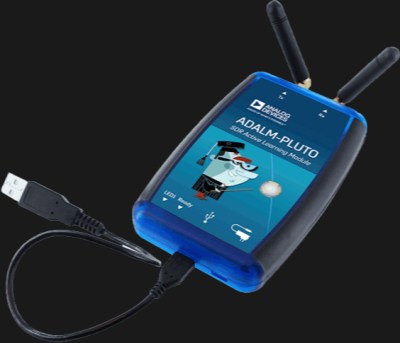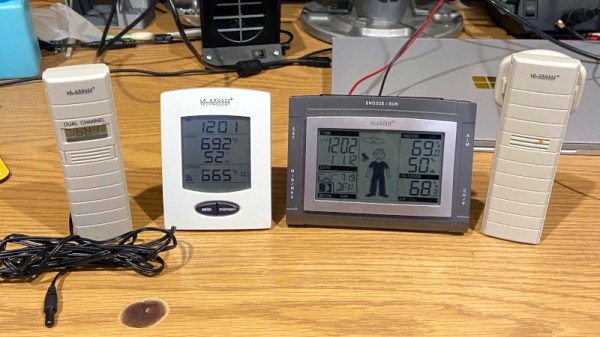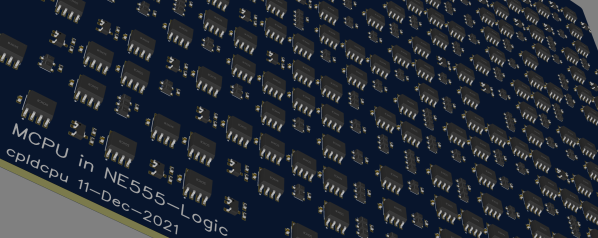We probably don’t have to tell most Hackaday readers why the current wave of low-cost software defined radios (SDRs) are such a big deal for hackers looking to explore the wide world of wireless signals. But if you do need a refresher as to what kind of SDR hardware and software should be in your bag of tricks, then this fantastically detailed account from [RK] about how he hacked his La Crosse WS-9611U-IT weather station is a perfect example.
 Looking to brush up his radio hacking skills, [RK] set out to use the ADALM-PLUTO software defined radio from Analog Devices to intercept signals between the La Crosse base station and its assorted wireless sensors. He notes that a $20 USD RTL-SDR dongle could do just as well if you only wanted to receive, but since his ultimate goal was to spoof a temperature sensor and introduce spurious data into the system, he needed an SDR that had transmit capabilities.
Looking to brush up his radio hacking skills, [RK] set out to use the ADALM-PLUTO software defined radio from Analog Devices to intercept signals between the La Crosse base station and its assorted wireless sensors. He notes that a $20 USD RTL-SDR dongle could do just as well if you only wanted to receive, but since his ultimate goal was to spoof a temperature sensor and introduce spurious data into the system, he needed an SDR that had transmit capabilities.
No matter your hardware, Universal Radio Hacker (URH) is the software that’s going to be doing the heavy lifting. In his write-up, [RK] walks the reader through every step required to find, capture, and eventually decode the transmissions coming from a TX29U wireless temperature sensor. While the specifics will naturally change a bit depending on the device you’re personally looking to listen in on, the general workflow is going to be more or less the same.
In the end, [RK] is not only able to receive the data coming from the wireless sensors, but he can transmit his own spoofed data that the weather station accepts as legitimate. Getting there took some extra effort, as he had to figure out the proper CRC algorithm being used. But as luck would have it, he found a Hackaday article from a couple years back that talked about doing exactly that, which help put him on the right path. Now he can make the little animated guy on the weather station’s screen don a winter coat in the middle of July. Check out the video below for a demonstration of this particular piece of radio prestidigitation.
Continue reading “SDR Toolkit Bends Weather Station To Hacker’s Whims”






 Using a shop vac is fine at smaller scales, but they can quickly be filled up on bigger jobs. To stop it getting filled up as quickly and wasting vacuum bags, [rctestflight] wanted to build a 3D-printed cyclonic separator to catch and dump the heavier-than-air particles from the routing process into an attached bucket.
Using a shop vac is fine at smaller scales, but they can quickly be filled up on bigger jobs. To stop it getting filled up as quickly and wasting vacuum bags, [rctestflight] wanted to build a 3D-printed cyclonic separator to catch and dump the heavier-than-air particles from the routing process into an attached bucket.












